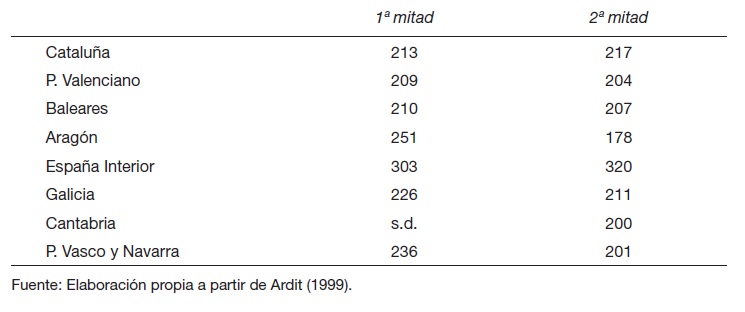The Aranda Census in the last third of the 18th century reveals the great administrative division present in the province of Palencia, which was subject to the jurisdiction of several lords who applied different local rules to each of their territories. Thus, in 1769 the census showed that 73.7% of the inhabitants of Palencia resided under the jurisdiction of a lord who was not the king. The model of realengo, similar to other provinces such as Burgos, was maintained, with settlement in small villages of few inhabitants and separated from each other, which favoured direct government by a lord.
Furthermore, 68.8% of the inhabitants of Palencia were answerable to a lay lord, continuing the downward trend of ecclesiastical lordships since even before the confiscations of the 16th century, so that the disappearance of religious jurisdictions only served to allow another, better established lord to absorb into his domains as many smaller towns.
Collection: Statistics
Project: 3. Rural world and urban world in the formation of the European identity., 4. Family, daily life and social inequality in Europe.
Chronology: XVIII
Scope: Secondary Education, Baccalaureate, University, Postgraduate
Link: http://www.tiemposmodernos.org/tm3/index.php/tm/article/view/5405
Resource type: Statistics
Format: Table
Source: Pousa, R. (2020). "La administración de justicia en la Corona d eCastilla: Palencia en el siglo XVIII", en Tiempos modernos, nº 41, p. 160.
Language: Spanish
Date: 2020
Owner: Roberto José Alcalde López (Modernalia)
Copyright: ©Tiempos Modernos ©Rodrigo Pousa Diéguez
Abstract: Table showing the jurisdictional ascription of Palencia's vassals in 1769
Tags






